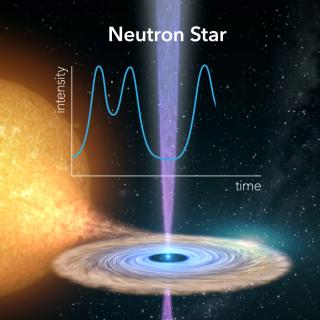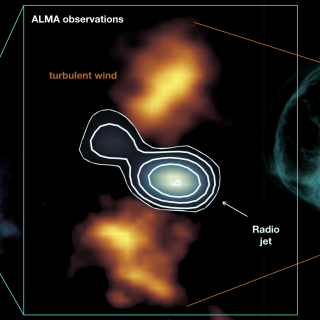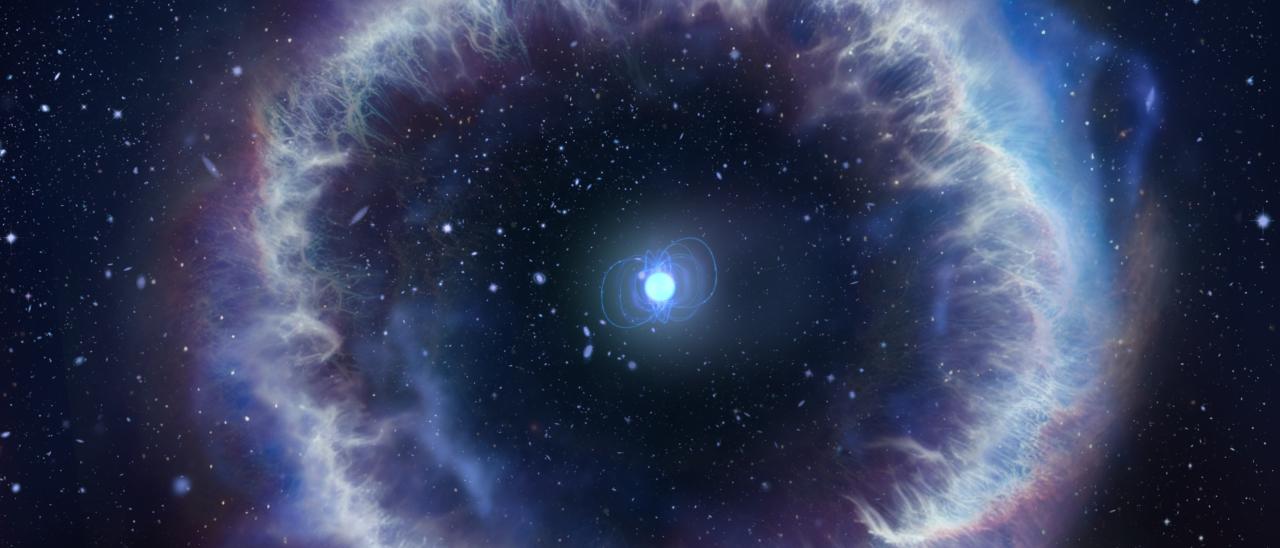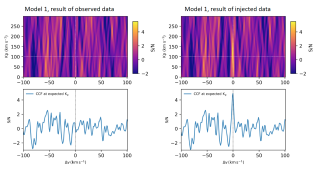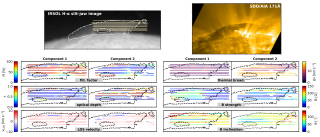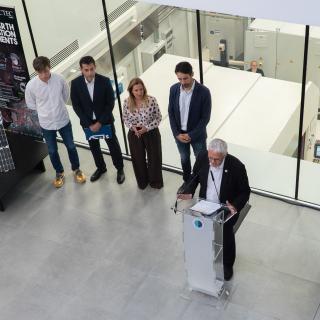A new international study, using observations from the Gran Telescopio Canarias at the Roque de los Muchachos Observatory on La Palma, has identified a plasma bubble as the source of the persistent emission observed in some of the so-called fast radio bursts (FRBs), one of the most powerful and unknown cosmic events in the Universe. The data also allow researchers to constrain the nature of the “engine” powering these mysterious sources. The results are published today in Nature.
Discovered just over a decade ago, fast radio bursts (FRBs) emit millisecond-long pulses that release an immense amount of energy in the radio wave range, making them one of the most energetic phenomena observed to date. Their origin, however, is still uncertain and there are many efforts by the astrophysics community around the world to understand the physical processes behind them.
In very few cases, the rapid flash that characterizes FRBs coincides with a persistent emission, which is also observed in the radio band. A new study led by the Italian National Institute for Astrophysics (INAF) and with the participation of IAA-CSIC, has shown that this persistent radiation originates in a plasma bubble, providing new information about the nature of these mysterious cosmic phenomena.
This new study, which also involved an international team of research institutes and universities from Italy, China, the United States, Spain and Germany, has recorded the weakest persistent radio emission ever detected for an FRB. The subject of the study is FRB20201124A, a fast radio burst discovered in 2020, whose source is located about 1.3 billion light-years away from us.
The observations were performed with the radio telescope Very Large Array (VLA) in the United States. The data enabled scientists to verify the theoretical prediction that a plasma bubble is at the origin of the persistent radio emission of fast radio bursts.
“We were able to demonstrate through observations that the persistent emission observed along with some fast radio bursts behaves as expected from the nebular emission model, i.e. a ‘bubble’ of ionized gas that surrounds the central engine” explains Gabriele Bruni, INAF researcher in Rome and lead author of the new paper. “In particular, through radio observations of one of the bursts that is nearest to us, we were able to measure the weak persistent emission coming from the same location as the FRB, extending the radio flux range explored so far for these objects by two orders of magnitude”.
The peculiarity is that FRB 20201124A is a recurring event, which is rare, as only about 10 % of the 800 or so known fast radio bursts are repeated. It was first detected on 24 November 2020 and, in March 2021, fast radio bursts were again recorded from the same region of the sky.
"Thanks to this fact, it has been possible to determine its position within the host galaxy with an uncertainty of a few milliseconds of arc," explains Ángela Gardini, researcher at the IAA-CSIC and one of the co-authors of the paper. "Its precise location and relatively small proximity to other FRBs made it an ideal target for studying the physical conditions of its environment.
Observations with MEGARA at the GTC
In previous work, the researchers had identified persistent emission in the host galaxy of this FRB, but had not been able to measure the position of the burst precisely enough to associate the two phenomena. For this new work, the team carried out an observing campaign in different bands, which proved crucial to separate the compact source from the faint diffuse emission.
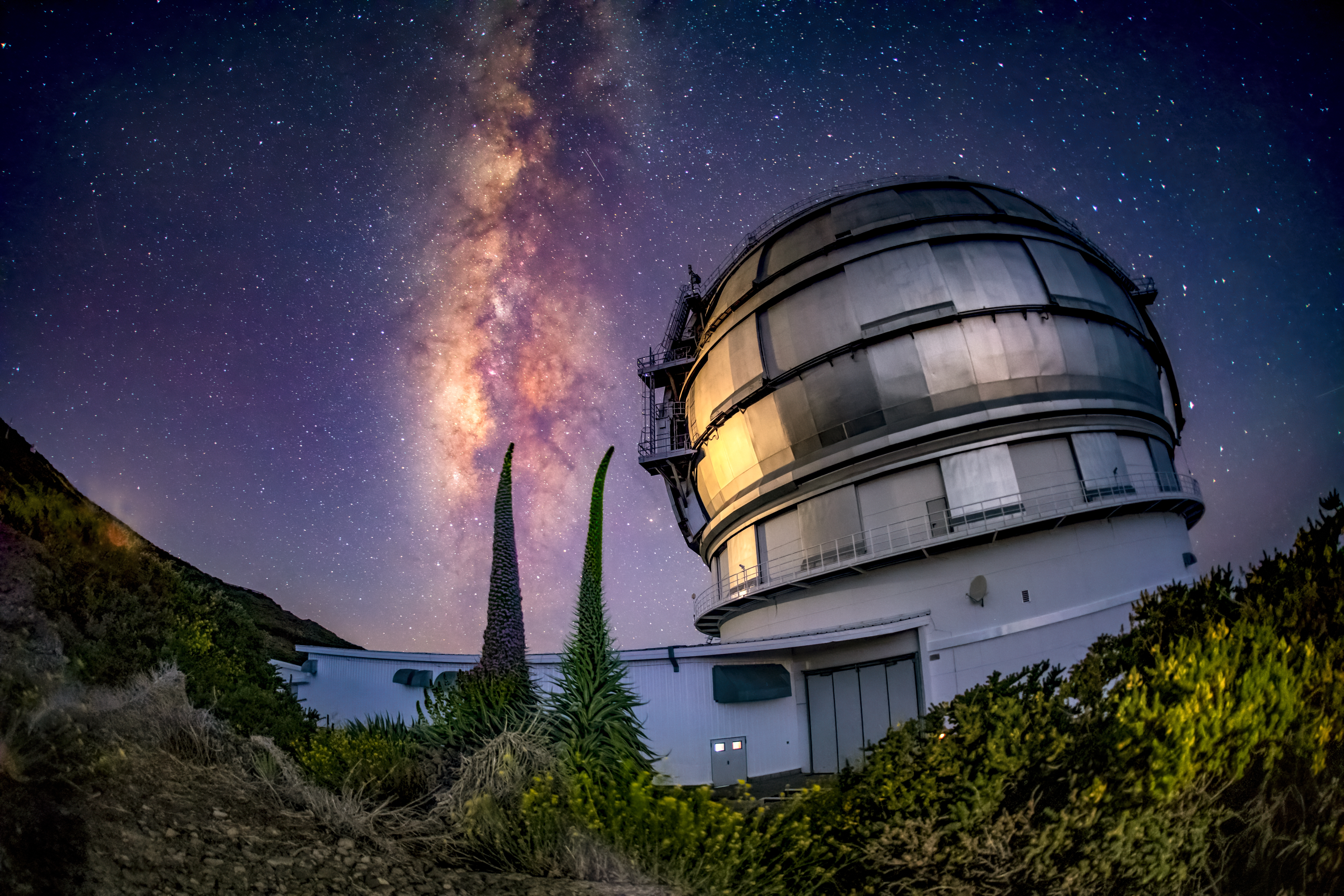
In particular, the observations made with the NOEMA interferometer, located at Plateau de Bure in the French Alps, and the MEGARA instrument of the Gran Telescopio Canarias (GTC or Grantecan), located at the Roque de los Muchachos Observatory (ORM) on La Palma, were decisive.
"The observations obtained with the MEGARA instrument reached a resolution comparable to the radio resolution of the VLA, allowing us to observe the FRB's environment in unprecedented detail and to discover the presence of a compact radio source, the FRB's plasma bubble, which is immersed in a star-forming region," says Romano Corradi, Grantecan's Director. "These results are a clear example of how the combination of the large collecting area of GTC, the world's largest optical and infrared telescope, together with the capabilities of its instruments are bringing us extraordinary results that improve our understanding of the Universe."
The research has also helped to pinpoint the nature of the engine that powers these mysterious bursts. According to the new data, the phenomenon is based on either a magnetar (a strongly magnetised neutron star) or a high-accretion X-ray binary system, i.e. a type of binary in which a neutron star or black hole "steals" matter from a companion star at very intense rates.
In fact, the winds produced by the magnetar or the X-ray binary system would be able to "blow" the plasma bubble, giving rise to the persistent radio emission, proving the existence of a direct physical link between the FRB engine and the bubble, which would be in its immediate vicinity.
"Understanding the nature of the persistent emission allows researchers to add a piece to the puzzle about the nature of these mysterious cosmic sources," concludes Bruni.
Article: Bruni, Gabriele et al. "Nebular origin for the persistent radio emission of fast radio bursts'", Nature 2024. DOI: 10.1038/s41586-024-07782-6
IAA Press Release
INAF Press Release
